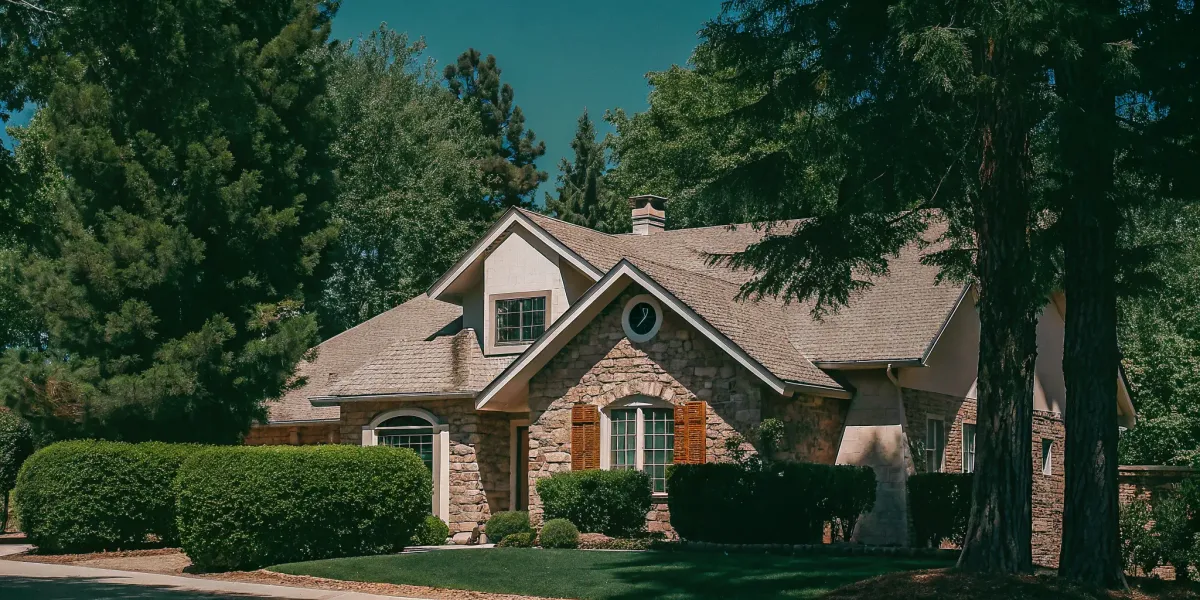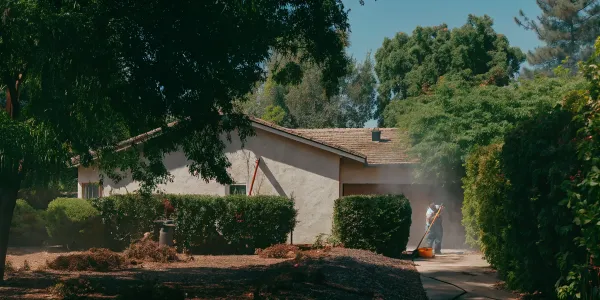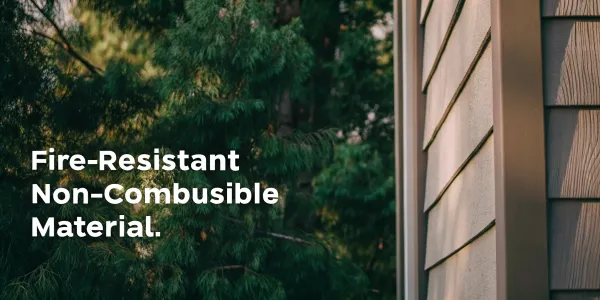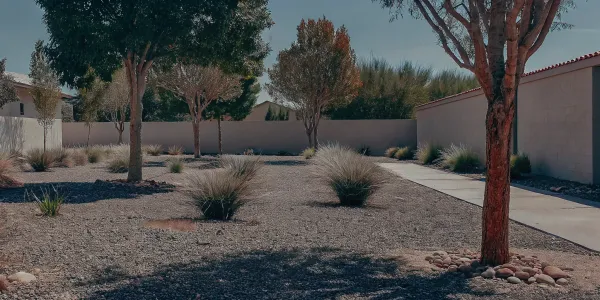4. Protect Your Home: Best Siding for Fire Risk Areas
Find the best siding for high fire risk areas. Learn which materials offer real fire protection, meet code, and help keep your home insurable and safe.

During a wildfire, the greatest threat to your home isn't a giant wall of flame; it's the blizzard of tiny, wind-blown embers that can travel a mile or more ahead of the fire. These embers are relentless, searching for any flammable material to ignite. Your home's siding is its primary shield against this attack. The wrong material, like wood or vinyl, can become fuel, helping the fire consume your home. The right material acts as a non-combustible barrier, deflecting embers and resisting heat. This article cuts through the marketing claims to give you a clear, practical guide to choosing the best siding for high fire risk areas, turning your home’s exterior into its strongest defense.
Key Takeaways
- Choose Class A Siding for Real Protection: Your home's siding is its primary shield against embers. Prioritize non-combustible materials like fiber cement, stucco, or brick that carry a Class A fire rating, as they won't add fuel to a fire like wood or vinyl siding can.
- Installation and Maintenance are Non-Negotiable: Even the best siding fails if installed poorly. Ensure professional installation to eliminate gaps where embers can enter, and perform regular checks for cracks or damage. Your siding is only as strong as its weakest point.
- Strengthen Your Case for Insurance: Installing fire-resistant siding is one of the most impactful upgrades you can make to stay insurable. It demonstrates to carriers that you are proactively managing your property's risk, which is a critical factor in their decision to offer or renew your policy in a high-risk area.
What Makes Siding Fire-Resistant?
When a wildfire approaches, your home's siding is its first line of defense against wind-blown embers and radiant heat. Choosing the right material isn't just about aesthetics; it's a critical part of your home hardening strategy. Fire-resistant siding is designed to withstand high temperatures without igniting, preventing flames from reaching the flammable structural materials underneath. But not all siding is created equal. Understanding what makes a material truly fire-resistant involves looking at its official fire rating, its inherent properties, and how it’s tested. These factors determine whether your siding will help shield your home or become fuel for the fire.
Understanding Fire Ratings (Class A, B, C)
Building materials are assigned a fire rating to indicate how well they resist burning and spreading flames. These ratings are categorized as Class A, B, or C, with Class A offering the highest level of fire resistance. For homes in wildfire-prone areas, a Class A fire rating is the standard you should look for. Materials like fiber cement, brick, and stucco typically carry this rating, meaning they can withstand severe fire exposure. Class B and C materials offer less protection and are generally not recommended for high-risk zones. When you’re shopping for siding, the fire rating is one of the most important specifications to check.
Key Qualities of Protective Materials
Beyond the official rating, the core qualities of the material itself determine its performance in a fire. The most important quality is non-combustibility—meaning the material will not burn. Products like fiber cement siding are designed to be noncombustible, so they won’t contribute fuel to a fire. Another key quality is how the material handles intense heat. Does it crack, melt, or warp, creating openings for embers to enter? The best materials maintain their structural integrity, forming a continuous barrier that protects the vulnerable wall assembly behind it. This ability to resist ignition and stay intact is what gives your home precious time during a wildfire.
How Siding Is Tested and Certified
Fire ratings aren't just marketing terms; they are based on standardized, rigorous testing. Independent laboratories expose siding materials to controlled flames to measure how quickly a fire spreads and how much smoke is produced. For example, a material is considered noncombustible if it passes the ASTM E136 test, which determines if it will burn. Research from institutions like the University of California Fire Research Laboratory has shown that some materials, like wood shingles, can cause flames to spread rapidly up a wall. This is why relying on certified products is so important—it ensures the siding you choose has been proven to perform under pressure.
Comparing the Best Fire-Resistant Siding Materials
Choosing the right siding is one of the most important decisions you can make to protect your home from wildfire. The material covering your exterior walls acts as the first line of defense against embers and flames. While no home is completely fireproof, selecting a non-combustible or fire-resistant siding can dramatically increase its chances of survival. Let’s look at the most effective options available so you can make an informed choice for your property.
Fiber Cement
Fiber cement is a standout choice for fire resistance and a favorite for home hardening projects. It’s a composite material made of sand, cement, and cellulose fibers, and it typically earns a Class A fire rating—the highest possible. This means it does not ignite when exposed to direct flame and won't contribute fuel to a fire. Beyond its safety benefits, fiber cement is incredibly durable, resisting rot, pests, and harsh weather. It also requires very little upkeep and comes in a wide variety of styles, mimicking the look of wood, stucco, or brick without the associated fire risk. Leading manufacturers have demonstrated how fiber cement siding can help protect a home from fire damage.
Stucco and Concrete
Stucco and concrete are traditional building materials that are inherently non-combustible. A properly mixed and applied three-coat stucco system provides a strong, seamless barrier against fire. Because it’s made from cement, sand, and water, it simply won’t burn. This makes it an excellent shield for the wood framing underneath. Similarly, concrete siding offers exceptional durability and fire protection. The key to maximizing the effectiveness of these materials is proper installation. Any cracks or gaps can create vulnerabilities where embers could penetrate, so it’s crucial to ensure the work is done correctly and to perform regular maintenance checks for any signs of damage.
Metal Siding
Metal siding, particularly steel and aluminum, is another non-combustible option for protecting your home. Steel siding is extremely durable and offers excellent fire resistance. Aluminum is also a great choice because it doesn't burn, making it a reliable and low-maintenance material. However, it's important to know that under intense heat, aluminum siding can warp or melt, potentially exposing the structure underneath. While it won't add fuel to a fire, its performance can be compromised in extreme conditions. For many homeowners, the fire-resistant qualities of aluminum still make it a strong contender, especially when balanced with its weather resistance and ease of care.
Brick and Stone
Brick and stone are two of the oldest and most reliable fire-resistant building materials. As they are naturally non-combustible, they provide an exceptional barrier against flames and radiant heat. A home with brick or stone veneer can withstand high temperatures for extended periods, giving firefighters more time to act. These materials are also incredibly durable and resistant to UV rays and extreme weather. The main considerations for brick and stone are cost and installation complexity, which are typically higher than other options. However, their longevity and proven performance in fires make them a worthwhile investment for long-term protection and peace of mind.
How the Top Materials Stack Up
It’s critical to understand that not all siding materials are created equal when it comes to fire safety. While options like fiber cement, stucco, and brick are non-combustible, other common materials can pose a significant risk. Wood siding, for example, is flammable and can easily ignite from embers, acting as fuel for a fire to spread. Vinyl siding is also a poor choice in high-risk areas. When exposed to heat, it can melt and fall away, exposing your home’s structure. Worse, burning vinyl releases toxic gases. When you compare siding options, always prioritize non-combustible materials with a Class A fire rating to give your home the best possible defense.
Installing and Maintaining Your Siding Correctly
Choosing a fire-resistant material is a huge step, but it’s only part of the equation. For your siding to truly protect your home, it needs to be installed correctly and maintained over time. Think of it as a system—if one part fails, the whole thing is compromised. Proper installation and regular upkeep ensure your siding performs as designed when you need it most, giving you peace of mind and helping you stay insurable. Taking these steps shows insurance carriers that you are proactively managing your property’s risk, which is a key factor in their coverage decisions.
Why Proper Installation is Non-Negotiable
Even the highest-rated siding can leave your home vulnerable if it’s not installed correctly. Gaps, improper flashing around windows and doors, or loose panels can create tiny entry points for wind-blown embers—the primary cause of home ignition during a wildfire. Professional installation is critical to ensure a tight seal and that the material meets its certified fire rating. For example, noncombustible siding is most effective when it's part of a complete system of home hardening measures, helping protect your home from external fire damage. Don’t let a poor installation job undermine your investment in a safer home.
Your Simple Siding Inspection Checklist
You don’t need to be an expert to keep an eye on your siding. A quick walk around your property a few times a year can help you spot potential problems before they become serious risks. Here’s what to look for:
- Cracks, holes, or gaps, especially where the siding meets your foundation, roof, windows, and doors.
- Warped, loose, or damaged panels that could catch embers.
- Peeling caulk or failing sealant around joints and trim.
- Signs of moisture or rot, particularly near the ground or under eaves, as this can weaken the material’s integrity. Catching these issues early makes repairs simpler and keeps your home’s first line of defense strong.
Key Maintenance to Keep Your Home Safe
Ongoing maintenance is about more than just curb appeal; it’s a critical part of your home’s wildfire defense. Start by keeping your siding clean. You can gently wash it with a soft brush and a mix of water and mild detergent to remove dirt, debris, and mildew that could potentially fuel a fire. More importantly, manage the area immediately around your home. With proper selection and maintenance of near-home vegetation, most siding can resist wildfire exposure. This means practicing fire-smart landscaping by regularly pruning shrubs and trees to keep branches from touching your home. Any damage you find during your inspections should be repaired immediately to maintain a continuous, protective barrier.
Answering Your Questions About Fire-Resistant Siding
Making a major change to your home’s exterior brings up a lot of questions. When you’re weighing the decision to install fire-resistant siding, you’re likely balancing cost, appearance, and the very real need to protect your property. It’s a significant choice, and it’s completely normal to feel a bit overwhelmed by the options and implications, especially with the added pressure of a volatile insurance market. You want to know if the investment will truly pay off, if you’ll have to compromise on the look of your home, and—most importantly—if it will help you keep your insurance coverage. These are the right questions to be asking. Let’s break down these common concerns head-on so you can make a clear, confident choice for your home and your family’s safety.
Is It Worth the Cost?
Let’s be direct: fire-resistant siding costs more upfront than standard vinyl or untreated wood. But it’s better to view this as an investment rather than an expense. While fire-resistant siding typically costs more than basic materials, it can pay for itself in the long run by potentially reducing your home insurance premiums. More importantly, it’s a critical layer of defense for your single largest asset. In a wildfire, non-combustible siding can be the feature that keeps embers from igniting your walls, saving your home from total loss. The peace of mind that comes with that protection is invaluable.
Will It Limit My Home's Style?
The idea of "fire-resistant" might bring to mind industrial-looking materials, but modern options offer incredible design flexibility. You don’t have to sacrifice curb appeal for safety. For example, fiber cement siding offers both protection and a great look for your home. It comes in many styles, colors, and textures that can convincingly mimic the classic appearance of wood. Other excellent choices like stucco, brick, and metal also provide a wide range of aesthetic options to match any architectural style, from rustic to contemporary. You can build a resilient home that you also love to look at.
Can It Help Me Keep My Insurance?
This is the question on nearly every California homeowner's mind. While no single upgrade can guarantee an insurance policy renewal, installing non-combustible siding is one of the most impactful steps you can take. It sends a clear signal to insurers that you are actively reducing your property's risk. As insurance companies scrutinize homes in high-risk areas, documented home hardening efforts become a critical factor in their decisions. Choosing noncombustible siding gives you a much stronger case for renewability and can make your property more attractive to carriers in a very tight market.
Your Siding is Part of a Bigger Defense System
Choosing fire-resistant siding is a critical step, but it doesn’t work in isolation. Think of your home’s exterior as a complete defense system where every component must work together to be effective. Embers from a wildfire can find and exploit any weak spot, whether it’s a flammable roof, an unscreened vent, or overgrown landscaping right next to the house.
Your siding is the shield, but its performance depends on the strength of your home’s other defenses. When you combine fire-resistant siding with a Class A roof, properly screened vents, and dual-pane windows, you create multiple layers of protection. This comprehensive approach, known as home hardening, is the most effective way to reduce your home’s vulnerability to wildfire. It’s about making sure every part of your home’s exterior is prepared to resist ignition from flying embers.
How Siding Works with Roofing, Vents, and Windows
Your siding’s job is to protect the vertical surfaces of your home, but a wildfire will attack from all angles. Embers can land on your roof, get sucked into attic vents, or build up heat against windows until the glass shatters. That’s why noncombustible siding must be part of a larger strategy. For example, even the best siding can’t protect your home if embers enter through unscreened vents and ignite your attic from the inside.
To create a truly resilient exterior, every element needs to be ignition-resistant. This includes installing a Class A fire-rated roof, covering all vent openings with 1/8-inch metal mesh, and using dual-pane tempered glass for windows. Some builders also install fire-resistant sheathing beneath the siding to provide an additional layer of protection against heat and flames.
The Role of Defensible Space and Landscaping
What surrounds your home is just as important as what it’s made of. The goal of defensible space is to create a buffer zone that slows or stops a wildfire from reaching your house. This starts with the area immediately touching your home. Fire-smart landscapes have no combustible materials, including mulch and plants, within five feet of the foundation.
Further out, the landscape should be lean, clean, and green. This means keeping plants properly watered and pruned, removing dead vegetation, and spacing out trees and shrubs. Good watering habits and appropriate fertilization keep plants healthy and less prone to burning. By managing the vegetation around your property, you rob an approaching fire of fuel, giving your home and firefighters a better chance.
Meeting Local Fire Codes
Local building codes and fire regulations exist for a reason: to save lives and property. These codes often specify the types of materials you must use for siding, roofing, and other exterior components, especially in high-risk fire zones. When you’re planning a siding project, it’s essential to check with your local building department to ensure your choices comply with current requirements.
Meeting these codes isn’t just about avoiding fines; it’s about ensuring your home is built to a standard that has been proven to withstand wildfire. Retrofitting a home for wildfire resistance involves more than just replacing siding. It means looking at the entire structure, from the foundation to the roof. For instance, regulations might require you to use the same ignition-resistant materials on patio covers as you do on your roof, creating a consistent shield around your property.
Start Building a More Resilient Home
Taking steps to protect your home from wildfire isn't just about peace of mind—it's a critical investment in your family's safety and financial stability. While no home can be completely fireproof, you can significantly lower its vulnerability by making smart, strategic upgrades. This process, often called "home hardening," involves strengthening your home's weakest points against embers and flames.
Choosing the right siding is a foundational step, but it’s part of a larger system. Your roof, vents, windows, and the defensible space around your property all work together to create a more resilient structure. Each improvement you make contributes to a stronger defense. It also sends a clear signal to your insurance provider that you are proactively managing your risk, which can be a key factor in maintaining your coverage. By combining physical upgrades with a clear emergency plan, you take control of your situation and build a safer future.
Choose the Right Siding for Your Property
Your home's siding is its first line of defense against wind-blown embers, which are responsible for igniting the majority of homes during a wildfire. That's why selecting the right material is so important. Fiber cement siding is a top choice for fire resistance and carries a Class A fire rating—the highest available. Brands like James Hardie make siding that won't add fuel to a fire because it doesn't burn when exposed to flames. It’s a durable, low-maintenance option that gives you a powerful layer of protection without sacrificing the look of your home.
Review Your Insurance Policy
Upgrading to fire-resistant siding can be a smart financial move. While it may cost more upfront than materials like vinyl or wood, it can help you save money over time. Some insurers offer discounts for homes with fire-resistant features, which can help offset the initial investment. It's worth a conversation with your insurance agent to see what discounts are available for home hardening improvements. Proactively reducing your home's risk not only protects your property but can also make it easier to keep your policy in an increasingly tough insurance market.
Create Your Wildfire Action Plan Today
Your siding is just one piece of the puzzle. To truly protect your home, you need a comprehensive approach. Simple actions like clearing flammable vegetation and debris from the first five feet around your home can make a huge difference. As Fire Safe Marin notes, with proper maintenance of near-home vegetation, most siding products can better resist wildfire exposures. The key is to combine a hardened home with a solid emergency plan. You can harden your home to reduce threats and prepare your family for an evacuation. Start by creating your own personalized Wildfire Action Plan to map out your evacuation routes and organize your emergency checklist.
Related Articles
- Protect Your Home: Top 10 Wildfire Prevention Measures
- Wildfire Season: Why It's Now a Year-Round Threat
- Class A Roof Assembly: A Homeowner's Guide
- What Is a Class A Roof Assembly? A Complete Guide
Frequently Asked Questions
What's the most important factor when choosing fire-resistant siding? The single most important thing to look for is a Class A fire rating. This is the highest level of fire resistance a material can receive, and it signifies that the siding can withstand severe fire exposure without igniting. Beyond the rating, you want a material that is non-combustible, meaning it simply will not burn or add fuel to a fire. Materials like fiber cement, stucco, and brick are excellent examples that meet this standard.
Will upgrading my siding guarantee I can keep my home insurance? While no single home improvement can guarantee an insurance policy renewal, installing Class A-rated, non-combustible siding is one of the most significant actions you can take. It demonstrates to insurance carriers that you are proactively reducing your property’s wildfire risk. In a challenging insurance market, documented home hardening efforts like this make your home a much more favorable risk and can be a critical factor in an insurer's decision to offer or renew coverage.
Is just replacing my siding enough to protect my home from a wildfire? Think of your siding as a key player on a team—it can't win the game alone. It's an essential first line of defense, but embers can exploit other vulnerabilities. For true resilience, your siding needs to work as part of a complete system that includes a Class A-rated roof, ember-resistant vents, dual-pane windows, and well-maintained defensible space. A home is only as strong as its weakest link, so a comprehensive approach is always the most effective.
My current siding isn't wood. Is it safe enough? Not all non-wood siding performs well in a fire. Vinyl siding, for example, can melt and warp when exposed to high heat, falling away from the wall and exposing the flammable structure underneath. The physical condition of your siding is also critical, regardless of the material. You should regularly inspect it for any cracks, gaps, or holes where embers could get trapped and ignite your home from the outside in.
Do I have to choose between safety and the style I want for my home? Absolutely not. You don't have to settle for an industrial look to get top-tier fire protection. Modern materials offer incredible versatility. Fiber cement, for instance, can convincingly mimic the appearance of classic wood clapboard, shingles, or panels, and it comes in a huge range of colors. Stucco, brick, and metal siding also offer distinct aesthetic styles, allowing you to find a safe, durable option that perfectly matches your home's architecture and your personal taste.




